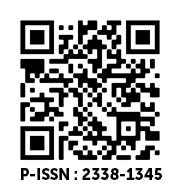Impact of clip project on the livelihood outcomes of Sheabutter processing women in Karaga District of Northern Region, Ghana
DOI:
https://doi.org/10.36782/apjsafe.v9i2.115Keywords:
Likelihood outcomes; micro-credit; sheabutter processing; CLIP Project; women groups; Ghana.Abstract
The poverty situation in northern Ghana is a major challenge to sustainable development. As a result of socio-cultural factors, women are vulnerable and their poverty situation is even more overwhelming. Development agencies, Governmental and Non- Governmental Organizations have adopted and implemented different strategies aimed at reducing poverty in these areas. Micro-credit delivery to the poor especially women is one of these strategies that seems to be making impact towards improving the livelihoods of the rural poor women. In recognition of the fact that the shea industry has a great potential and could help alleviate poverty in the five northern regions of Ghana, and most especially among the rural women, the Community Life Improvement Programme (CLIP) was established in 1997 to help boost the shea industry through the initiation of micro-credit scheme to help the northern women patronize, intensify and expand the sheabutter processing micro-business. This study was therefore conducted in 2015 to evaluate the impact of the CLIP project on the livelihood outcomes of women in the micro-scale sheabutter processing in Karaga district of Northern region. By means of purposive and snow ball sampling techniques, 110 respondents (consisting of 80 beneficiary and 30 non-beneficiary women) were interviewed for the study. An interview guide and focus group discussions were used to obtain information from the sheabutter processing women. Relevant literature documents of the CLIP project were also consulted. From the survey, the activities undertaken by the CLIP project to improve the livelihood of the beneficiary sheabutter processors were identified and the impact of the project on the beneficiary women assessed. The results of the study revealed that the livelihood outcomes of the beneficiary women have been improved. The study further revealed that the livelihood outcomes of the beneficiary women were far better off as compared to that of the non-beneficiary women of the CLIP project. The study recommended that, the CLIP project should expand its base to cover many more sheabutter processing women in the target communities, and intensify its training and monitoring activities.
Downloads
References
Afrane, S. 2000. Impact Assessment of Micro-finance Interventions in Ghana and South Africa: A Synthesis of Major Impacts and Lessons. Journal of Microfinance Vol. 4 No. 1.
Ardayfio-Schandorf E., Brown, C.K. and Aglobitse, B.P. 1995. The impact of PAMSCAD on family. A study of the ENOWID Intervention in the Western region of Ghana. The family and development programme U.G. FADEP Technical series no. 6.
Bell, J. 1993. Doing your research project: A guide for first time researchers in education and social science, Open University Press, UK.
Booth, D., Holand, J., Lanjouw, P. and Herbert, A. 1998. Participation and Combined Methods in African Poverty Assessment: renewing the agenda. Social Development Division, African Division, February. London: DFID.
Chowdhury, A.M.R., Mahmud, M. and Abed, F.H. 1991. Impact of Credit for the Rural Poor: the case of BRAC Small Enterprise Development, Volume 2, No. 3. IT Publications, London.
Coulombe, Harold, and Andrew Mckay. 2000. Assessing the Robustness of Changes in Poverty in Ghana Over the 1990s (mimeo, World Bank, Washington, DC and Accra, Ghana.
DFID. 1999. Sustainable Livelihood Guidance Sheet: Section 2. Department for International Development. London: DFID.
Fraenkel J.R. and Wallen N.E. 2000. How to Design and Evaluate Research in Education, 4th ed. McGraw Hill Inc., USA.
MoFA. 2015. Ministry of Food and Agriculture: Northern Region Agricultural Development Unit, Tamale, Ghana.
Mustafa, S. and Ara. 1996. Beacon of Hope: An Impact Assessment of BRAC’s Rural Development Programme, Dhaka, BRAC Evaluation Division.
Robinson, M. 2001. The Micro-finance Revolution. Sustainable Finance for the Poor. Lessons from Indonesia. The Emerging Industry. The World Bank, Washington, D.C.
PHC. 2010. The 2010 Population and Housing Census Reports: Analysis of district data and implications for planning. Published by the Ghana Statistical Service, Accra, Ghana.
Uaiene, R., Arndt, C. and Masters, W. 2009. Determinants of Agricultural Technology Adoption in Mozambique. Discussion papers No. 67E.
Young, G., Samarasinghi, V. and Kusterer, K. (eds.) (Undated). Women at the Center. Development Issues and Practices for the 1990s. Kumarian Press.






